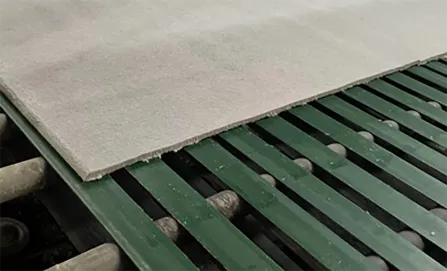- Afrikaans
- Albanian
- Amharic
- Arabic
- Armenian
- Azerbaijani
- Basque
- Belarusian
- Bengali
- Bosnian
- Bulgarian
- Catalan
- Cebuano
- Corsican
- Croatian
- Czech
- Danish
- Dutch
- English
- Esperanto
- Estonian
- French
- German
- Greek
- Hindi
- Indonesian
- irish
- Italian
- Japanese
- Korean
- Lao
- Malay
- Myanmar
- Norwegian
- Norwegian
- Polish
- Portuguese
- Romanian
- Russian
- Serbian
- Spanish
- Swedish
- Thai
- Turkish
- Ukrainian
- Uzbek
- Vietnamese
aug. . 16, 2024 15:21 Back to list
Comparison of PVC and Gypsum Ceilings for Interior Design Choices
PVC vs. Gypsum Ceiling An In-Depth Comparison
When it comes to interior design and construction, ceilings play a crucial role in defining the aesthetics and functionality of a space. Two popular materials used for ceilings are PVC (Polyvinyl Chloride) and gypsum. Each of these materials has its own set of characteristics, benefits, and drawbacks. This article aims to provide a comprehensive comparison between PVC and gypsum ceilings to help you make an informed decision for your next project.
Material Composition and Structure
PVC ceilings are made from a type of plastic known as polyvinyl chloride, which is lightweight, durable, and resistant to moisture. This makes PVC an excellent choice for areas prone to humidity, such as bathrooms and kitchens. On the other hand, gypsum ceilings are made from gypsum board (also known as drywall), which is a more traditional building material. Gypsum is natural, fire-resistant, and offers good sound insulation properties.
Aesthetics and Design Options
When it comes to aesthetics, PVC ceilings generally offer a modern and sleek look. They come in a variety of colors, patterns, and finishes, including glossy and matte options. PVC panels can also mimic the look of wood or fabric, providing a versatile designing option. Gypsum ceilings, while not as varied in terms of surface finishes, can be customized with plaster or paint. They can also be shaped into arches or other decorative features, offering a classic and elegant appearance.
Installation Process
pvc vs gypsum ceiling

The installation of PVC ceilings is relatively straightforward. The panels can be easily cut to size and typically attach directly to the underlying structure without the need for additional framing. This can significantly reduce installation time and labor costs. Gypsum ceilings require more effort to install; they often necessitate a framework, and the boards must be carefully fitted and finished. The installation process can take longer and require professional expertise to ensure a smooth and professional finish.
Maintenance and Durability
One of the standout features of PVC ceilings is their low maintenance requirements. They are resistant to moisture, mold, and mildew, making them ideal for humid environments. A simple wipe-down with a damp cloth is usually sufficient to keep them looking new. Gypsum ceilings, while durable, can be susceptible to water damage and require more careful maintenance, especially in wet areas. If a gypsum ceiling becomes stained or damaged, repairs can be cumbersome and may require repainting or replacement.
Cost-Effectiveness
In terms of cost, PVC ceilings often emerge as a more economical choice, especially in the long run. Their durability and low maintenance can save homeowners money over time. Gypsum ceilings may have a lower initial cost in some cases, but additional expenses related to installation, maintenance, and potential repairs can make them more expensive overall.
Conclusion
Both PVC and gypsum ceilings have their own unique advantages and disadvantages, and the choice between them largely depends on your specific needs and preferences. If you are looking for a cost-effective, low-maintenance solution that is resistant to moisture and offers modern aesthetics, PVC ceilings may be the best choice. However, if you prefer a more traditional look and are willing to invest time and resources into installation and maintenance, gypsum ceilings could be the better option. Ultimately, the decision should align with your design vision, budget, and the specific requirements of the space. Regardless of the choice, both materials can enhance the beauty and functionality of your interior spaces.
-
Transform Interiors with PVC Gypsum Ceiling: A Stylish, Durable, and Moisture-Resistant SolutionNewsMay.19,2025
-
The Smart Interior Upgrade: Discover the Durability and Versatility of Gypsum Ceiling Access Panel SolutionsNewsMay.19,2025
-
The Smart Choice for Interior Design: Discover the Value of PVC Gypsum Ceiling SolutionsNewsMay.19,2025
-
Mineral Fiber Ceiling Tiles: The Smart Blend of Performance and AestheticsNewsMay.19,2025
-
Mineral Fiber Ceiling Tiles: The Superior Choice Over Gypsum for Sound and Fire SafetyNewsMay.19,2025
-
Mineral Fiber Ceiling Tiles: Eco-Friendly Strength and Style for Every CeilingNewsMay.19,2025







